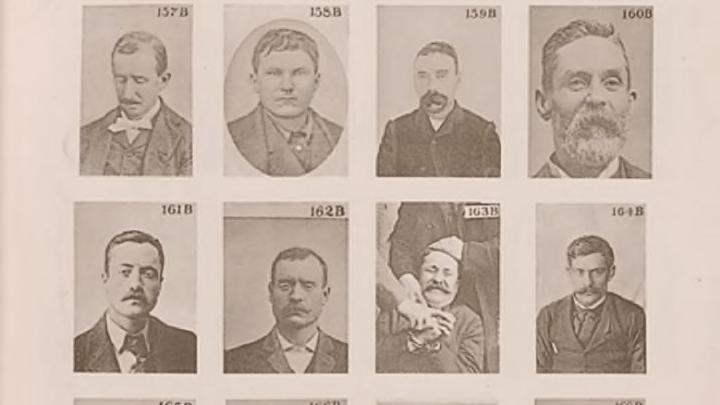Allan Pinkerton, a Scottish immigrant, had no formal training in legal matters but he had an inquiring mind and a devotion to law and order. He opened the Pinkerton National Detective Agency in Chicago in 1850. He and his employees specialized in covert, undercover work, and the company’s logo (an unblinking eye with the motto “We Never Sleep”) inspired the term “private eye.”
One of Pinkerton’s many crime-fighting innovations was the so-called mug shot. He took a photograph of suspected criminals when they were arrested, and then kept a primitive database of the pictures along with the pertinent details of each suspect, such as his physical characteristics and criminal habits. (Some of the earliest mug shots in Pinkerton’s collection show that not all arrestees were cooperative when it came to a photo opportunity—many of the pictures have Pinkerton employee hands holding the perp in place while facing the camera.)
The practice of taking photos of suspected criminals dated back to Europe in the 1840s, but Pinkerton's bookkeeping and formalization of the process helped it become commonplace.
Pinkerton compiled his mug shots in a book that also included handwriting samples of the suspects and he sent copies to major banks and other agencies that dealt in cash transactions. This effort helped to lower the incidence of both bank robberies and forgeries. Eventually, police agencies nationwide followed suit and started not only photographing suspects, but also sharing the photos and arrest records with cops across the country. Thus was born the modern “rap sheet.”
And the term "mug shot"? The slang word "mug" used in reference to a person's face dates back to the early 1700s, and it was common street parlance in early 20th century America.
